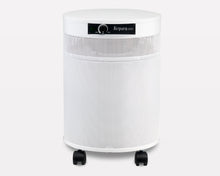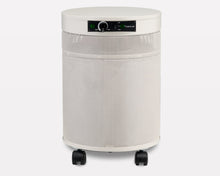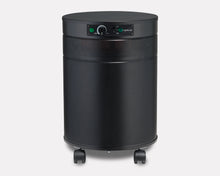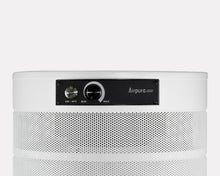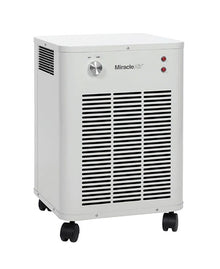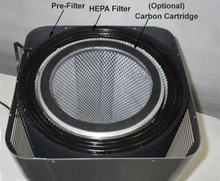Choosing the Right Size: Calculating CFM and ACH for Effective Smoke Removal in Any Space
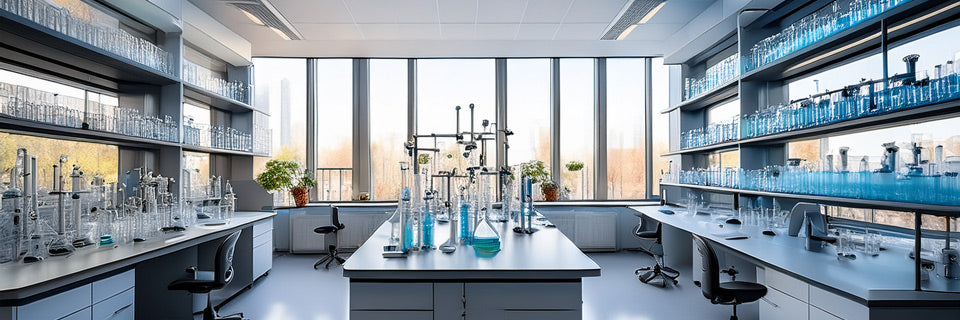
Whether it’s the lingering odor from a cigarette, the dense haze from a kitchen fire, or the smoky atmosphere of a cigar lounge, one thing is clear: smoke presents a significant air quality challenge. It’s not just a nuisance; the fine particulate matter in smoke, known as PM2.5, can penetrate deep into the lungs and bloodstream, posing serious health risks. From hospitality businesses to private residences, effectively removing smoke from the air is a top priority for health, comfort, and safety. But simply buying an air purifier isn’t enough. The key to true effectiveness lies in understanding and calculating the right size for your specific needs, using two critical metrics: Cubic Feet per Minute (CFM) and Air Changes per Hour (ACH).
The Problem with Unfiltered Air
Smoke is more than just a visible cloud. It's a complex cocktail of gases and microscopic particles. According to the U.S. Environmental Protection Agency (EPA), secondhand smoke alone contains over 7,000 chemicals, including hundreds that are toxic or carcinogenic. These tiny particles, PM2.5, are so small that they can bypass the body’s natural defense mechanisms. Exposure is linked to a range of health issues, from respiratory problems and asthma attacks to more severe conditions like heart disease and cancer. For businesses, poor air quality can also lead to a poor customer experience, damaged reputation, and even health code violations. Simply put, ignoring smoke-filled air isn't an option.
To truly address this problem, a powerful air purification system is essential. The challenge, however, is that not all purifiers are created equal. An underpowered unit will run constantly without making a significant dent in the smoke, while an oversized one can be an unnecessary expense. This is where understanding the science of air purification comes in. The effectiveness of an air purifier for smoke removal is directly tied to its capacity, and that capacity is measured in CFM.
Understanding CFM and ACH: The Gold Standard for Sizing
When you’re looking to purchase an air purifier for smoke, you’ll encounter various metrics. While some companies focus on CADR (Clean Air Delivery Rate), we at Commercial Air Purifiers, LLC, believe CFM is the most transparent and reliable measurement, especially for commercial-grade applications. CFM measures the volume of air an air purifier can process in one minute. A higher CFM means the unit can clean a larger volume of air more quickly.
The other crucial metric is Air Changes per Hour, or ACH. This number tells you how many times the entire volume of air in a room is replaced or filtered in an hour. For general air purification, 2-4 ACH is often considered sufficient. However, for a high-contaminant environment like a smoking room or a space with persistent smoke issues, a much higher ACH is necessary. We recommend a minimum of 6 ACH for these applications to ensure the air is being cleaned at a rate that can keep up with the constant introduction of new smoke.
To calculate the CFM you need, you first need to find the cubic feet of your space. This is done by multiplying the room's length, width, and height. For example, a room that is 30 feet long, 20 feet wide, and 10 feet high has a volume of 6,000 cubic feet.
The formula for calculating the required CFM is as follows:
(Room Volume in Cubic Feet × Desired ACH) ÷ 60 (minutes in an hour) = Required CFM
Using our example room, let’s calculate the CFM needed for a high-smoke environment requiring 6 ACH:
(6,000 cubic feet × 6 ACH) ÷ 60 = 600 CFM
This calculation tells us that to effectively handle the smoke in this specific room, you would need an air purifier with a CFM rating of at least 600. It's a precise, data-driven approach that ensures you are investing in a unit that will perform as needed. For more guidance and to make these calculations easy, we provide a convenient CFM calculator on our website.
The Science of Smoke Removal: Filtration Types
Beyond the right size, the type of filtration system is equally important for tackling smoke. The most effective systems for removing smoke particles use a multi-stage approach. The first stage is typically a pre-filter designed to capture larger particles like dust and hair, protecting the more delicate filters that follow.
The next, and most critical, component is a high-efficiency particulate air (HEPA) filter. A true HEPA filter is certified to capture at least 99.97% of airborne particles that are 0.3 microns in size. This is particularly important for smoke, as many of its most harmful components, including PM2.5, fall within or are agglomerations of particles around this size. A 2017 study published in the Journal of Exposure Science & Environmental Epidemiology found that using HEPA air cleaners significantly reduced the concentration of PM2.5 from secondhand tobacco smoke in homes. The study highlights the effectiveness of this technology in real-world settings.
The third crucial stage is an activated carbon filter. While HEPA filters excel at trapping solid particles, they are not effective against the volatile organic compounds (VOCs) and gases that cause smoke odors. Activated carbon, with its vast surface area, adsorbs these chemical compounds, effectively neutralizing the smell. This combination of HEPA and activated carbon filtration is the gold standard for comprehensive smoke removal.
Case Study: A Practical Application
Let's consider a scenario in a commercial kitchen. A grill often produces a significant amount of smoke and grease particles, creating a hazardous and unpleasant environment. A typical kitchen might be 25 feet by 20 feet with 12-foot ceilings. The volume is 6,000 cubic feet. Given the constant production of smoke and grease, a high ACH is critical—let’s aim for 10 ACH.
Using our formula:
(6,000 cubic feet × 10 ACH) ÷ 60 = 1,000 CFM
This calculation suggests that the kitchen would need an air purifier with a CFM of at least 1,000. For such a demanding environment, a large, robust commercial air purifier would be the only viable solution to maintain clean air and a safe working environment. This is a level of performance that a residential-grade unit simply cannot achieve. At Commercial Air Purifiers, LLC, we work with businesses every day to make these precise calculations and recommend the right unit for their specific needs, ensuring they get a solution that truly works.
The Importance of Quality and Trust
When you’re making an investment in air quality, especially for a commercial space, the quality of the product matters immensely. Commercial Air Purifiers, LLC, is dedicated to providing only the best. We understand that a cheap, low-quality unit is a liability, not a solution. Our focus is on delivering high-quality, reliable air purifiers that are manufactured in North America. This commitment to quality means we don’t compete on price; we compete on performance, durability, and a guaranteed product.
A 2021 study in the International Journal of Environmental Research and Public Health confirmed the effectiveness of air purification systems in mitigating indoor air pollution, including particulate matter from sources like biomass burning and tobacco smoke. The research supports the notion that air purifiers are not just a luxury but a necessary tool for improving public health.
When considering a purchase, look for manufacturers who are transparent about their products' performance. A company that readily provides CFM data and stands behind its products with a robust warranty is a trustworthy partner. We believe in providing our customers with a product that will solve their problem for years to come, without the hassle of frequent repairs or replacements.
Your Next Steps to Cleaner Air
Taking control of your air quality begins with a simple assessment. Start by measuring your space to determine its volume in cubic feet. Then, consider the level of air contamination and decide on an appropriate ACH. For general use, 2-4 ACH is fine. For high-contaminant spaces like smoking rooms, aim for 6 ACH or higher.
Once you have your room's volume and desired ACH, you can use our CFM calculator to determine the exact CFM you need. This data-driven approach will ensure you select a unit that is perfectly sized for your needs, providing maximum effectiveness without unnecessary cost. For smoke removal, a unit with a multi-stage filtration system that includes a pre-filter, HEPA, and activated carbon filter is non-negotiable.
Choosing the right size air purifier is the most critical step in achieving effective smoke removal. By focusing on the science behind air purification, calculating your specific needs using CFM and ACH, and investing in a high-quality, reliable unit, you can ensure a clean, healthy, and odor-free environment.
Frequently Asked Questions
What is the difference between CFM and CADR?
CFM (Cubic Feet per Minute) measures the total volume of air a unit moves per minute. CADR (Clean Air Delivery Rate) measures how much air is being cleaned of a specific pollutant (dust, pollen, or smoke) per minute. While CADR can be useful for comparing residential units, CFM is a more direct and transparent measure of an air purifier’s raw power, which is why we at Commercial Air Purifiers, LLC, use it as our primary metric.
Do I need an air purifier with a carbon filter for smoke?
Yes, absolutely. Smoke is composed of both solid particles (which a HEPA filter can remove) and gases/VOCs (which cause the odor). Without an activated carbon filter, the air purifier will remove the visible smoke but leave the lingering smell behind.
Can a residential air purifier work for a commercial space?
It is highly unlikely. Residential units are designed for smaller spaces and have much lower CFM ratings. Attempting to use a residential unit in a commercial space will likely result in an underpowered system that fails to adequately clean the air.
How often should I change my filters?
Filter replacement schedules depend on the level of contamination in the air and the manufacturer's recommendations. In a high-smoke environment, filters will need to be changed more frequently to maintain optimal performance. It is important to check your unit’s user manual for specific guidance.
Byline: The team at Commercial Air Purifiers, LLC, is dedicated to providing effective, reliable, and high-quality air purification solutions. We believe in empowering our customers with the knowledge to make informed decisions about their air quality needs. Our products are made in North America and come with a performance guarantee.

